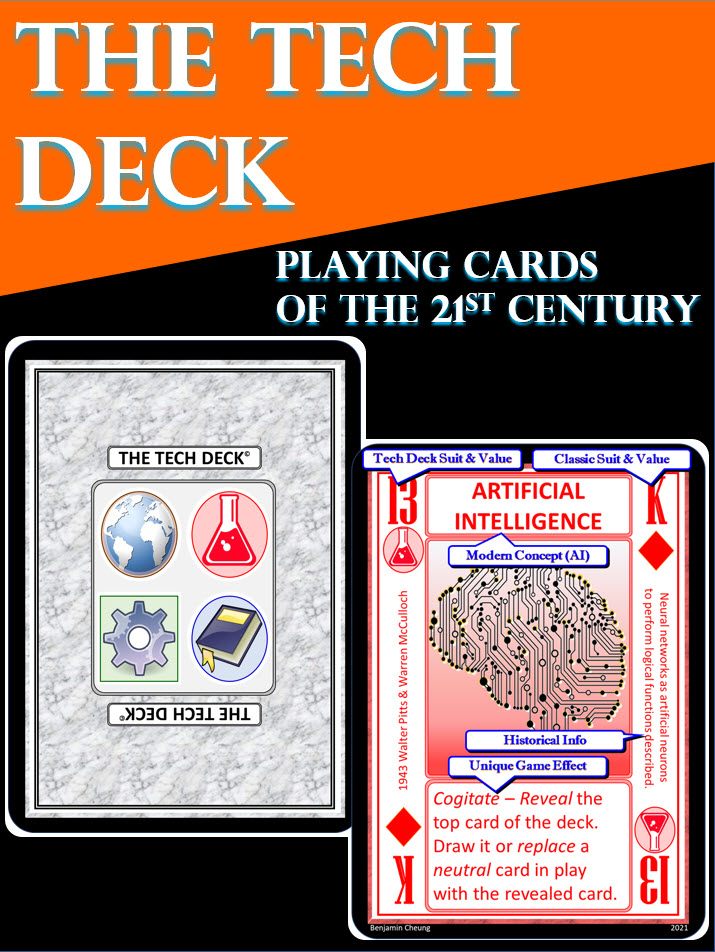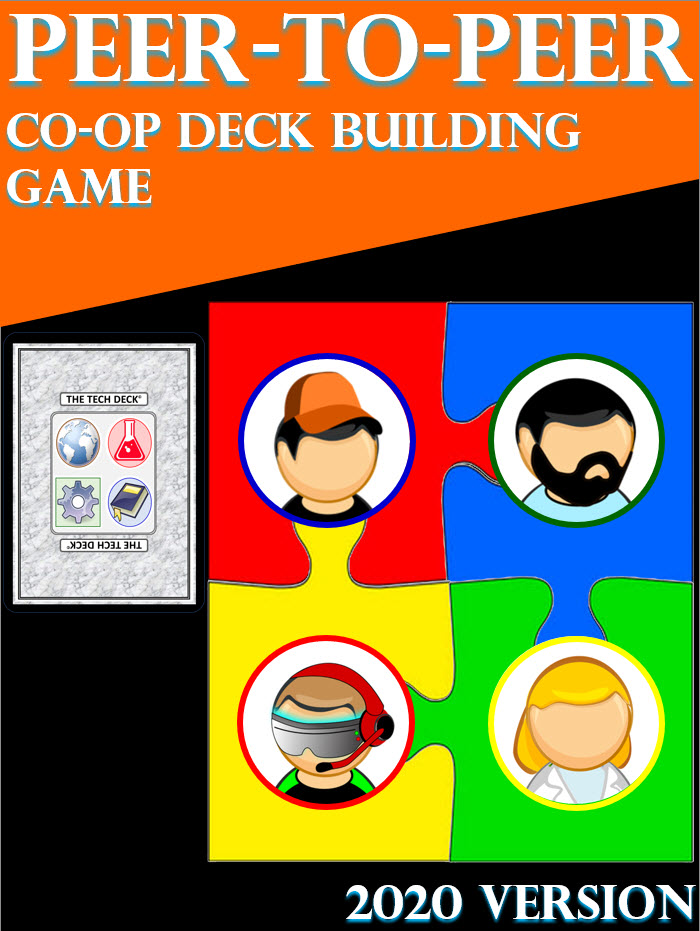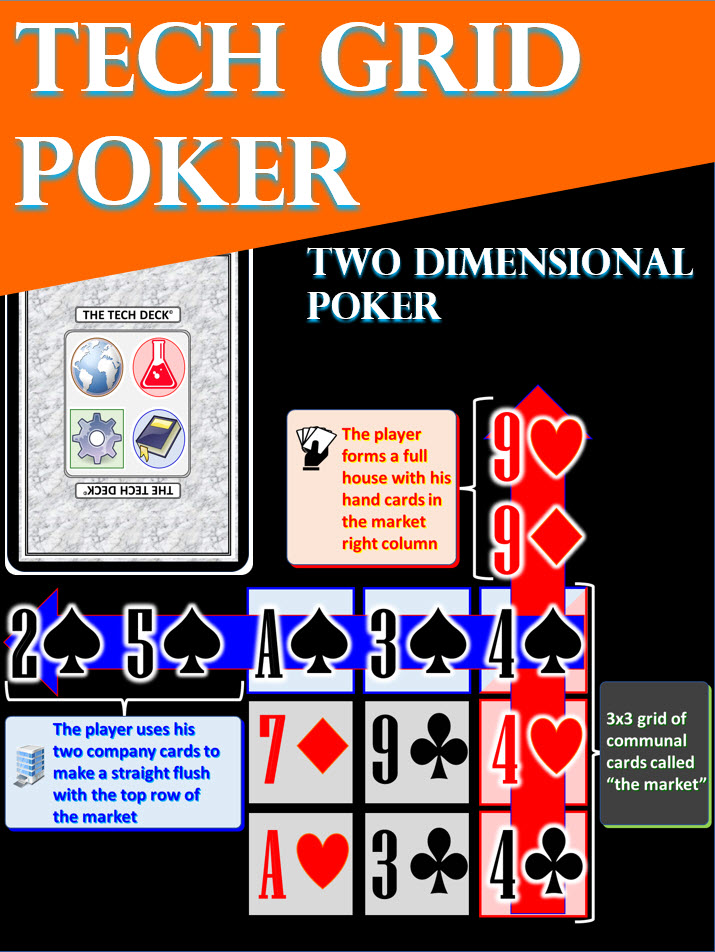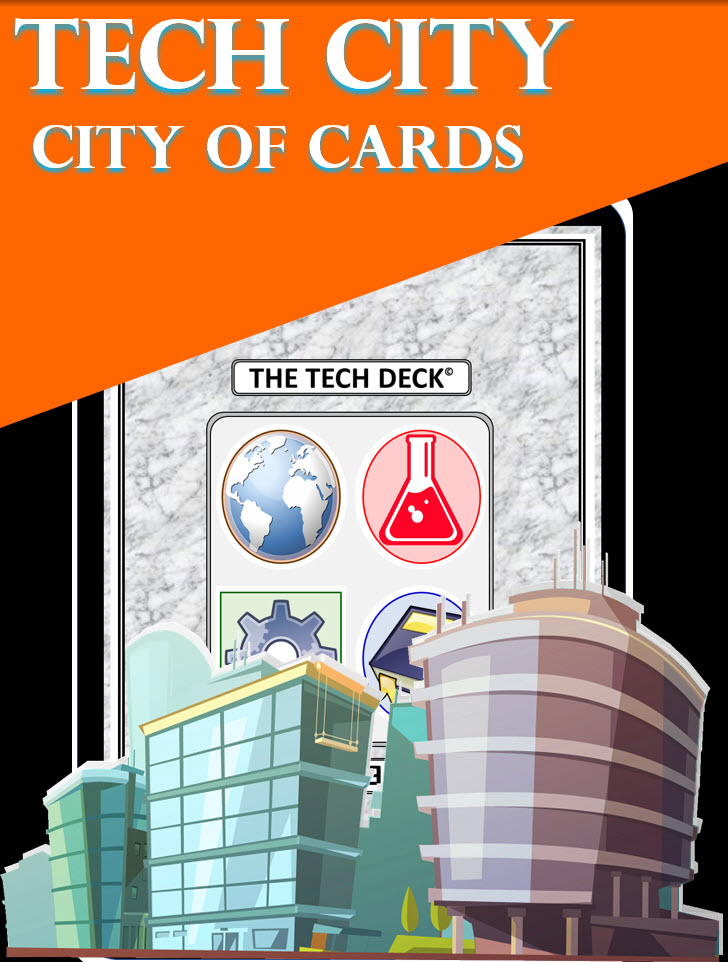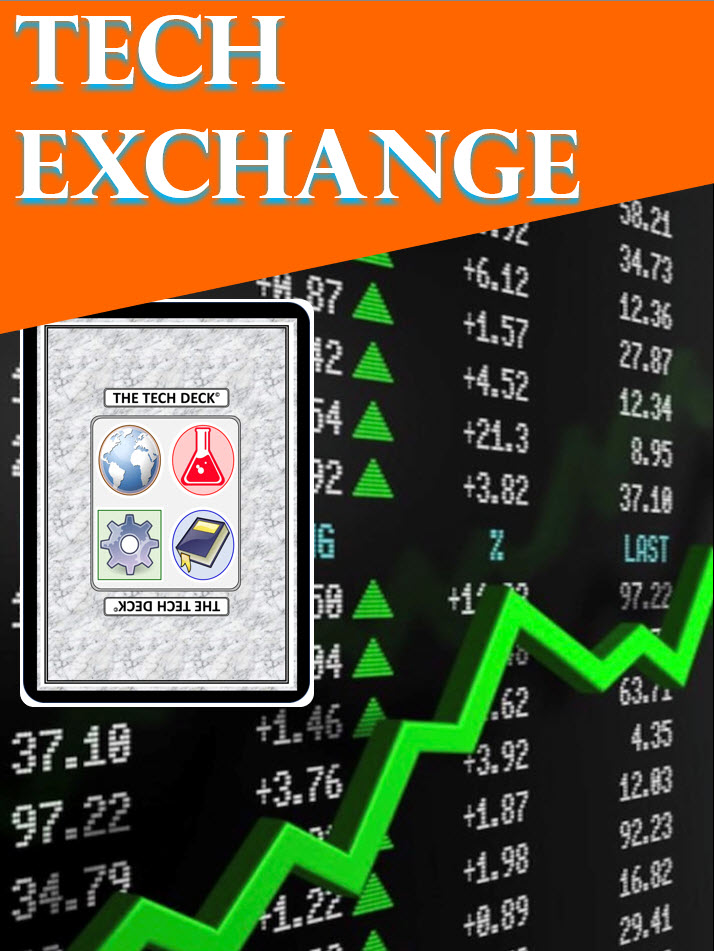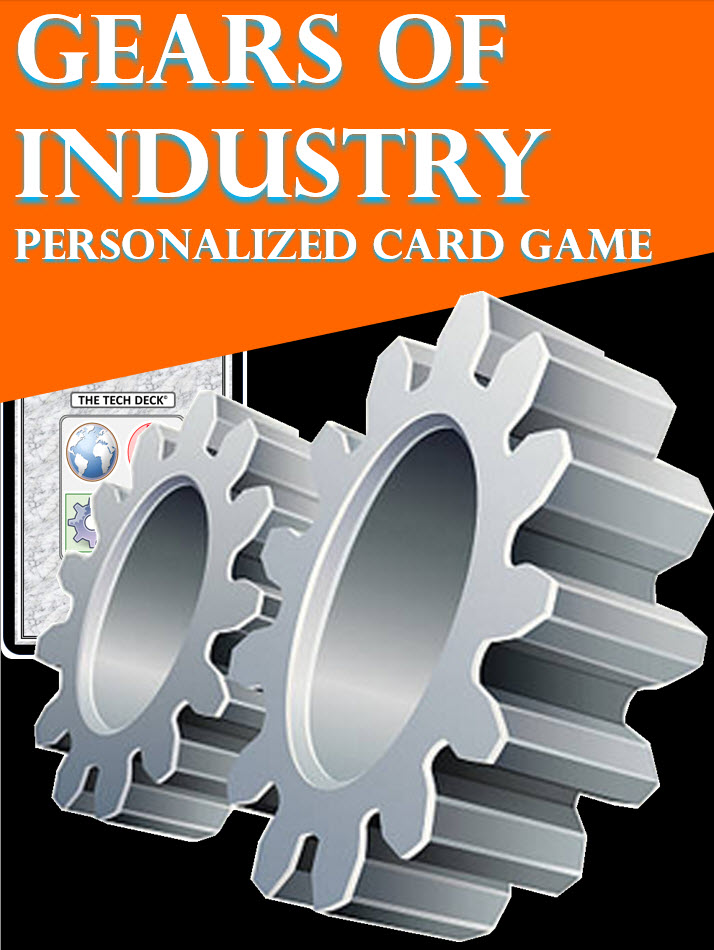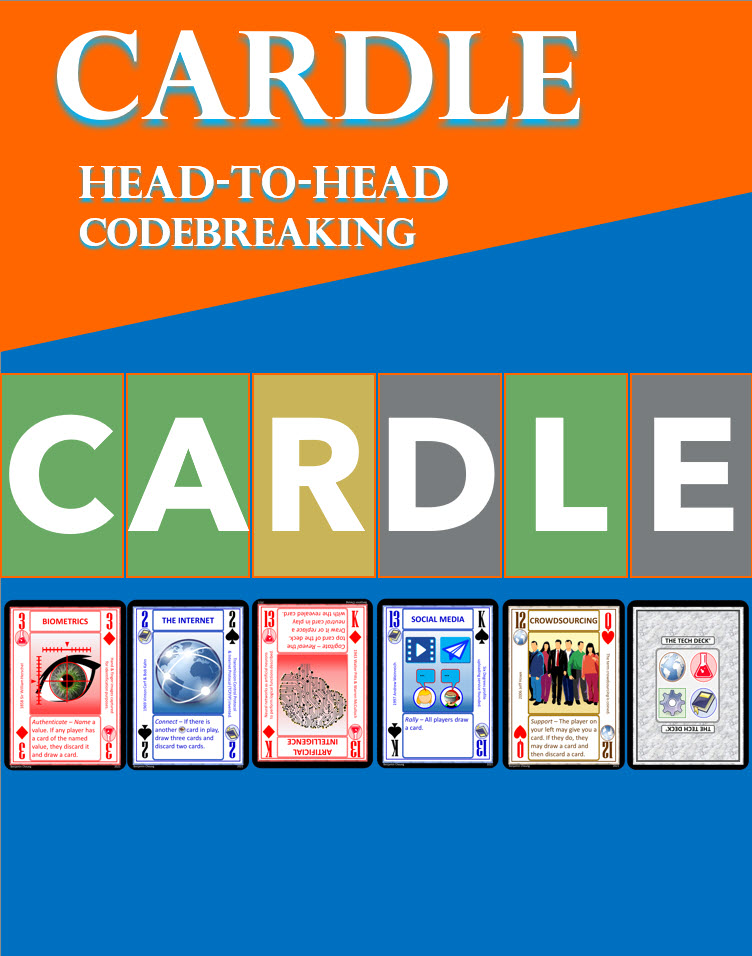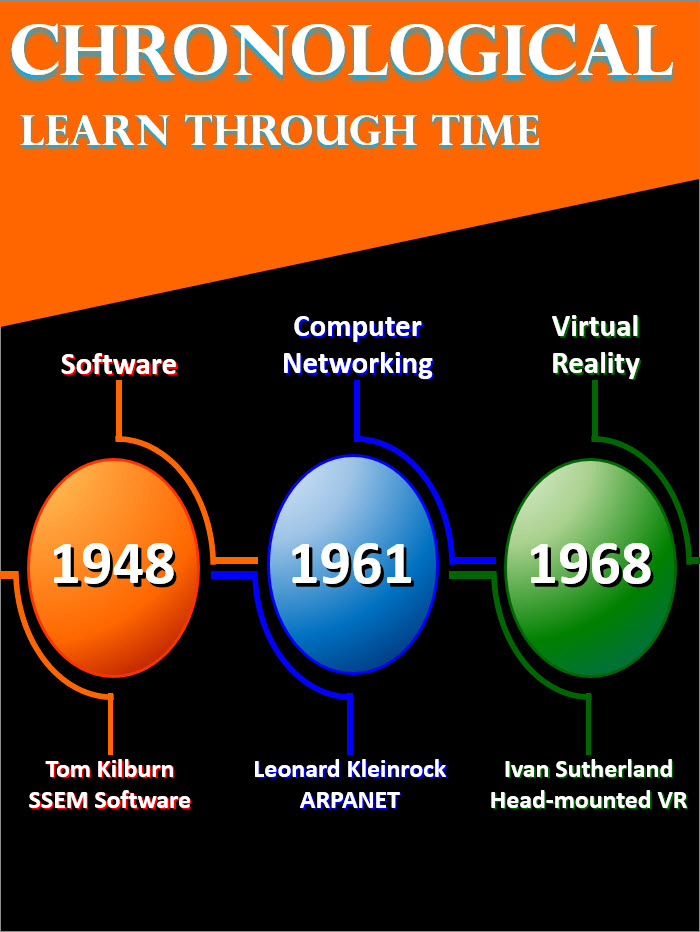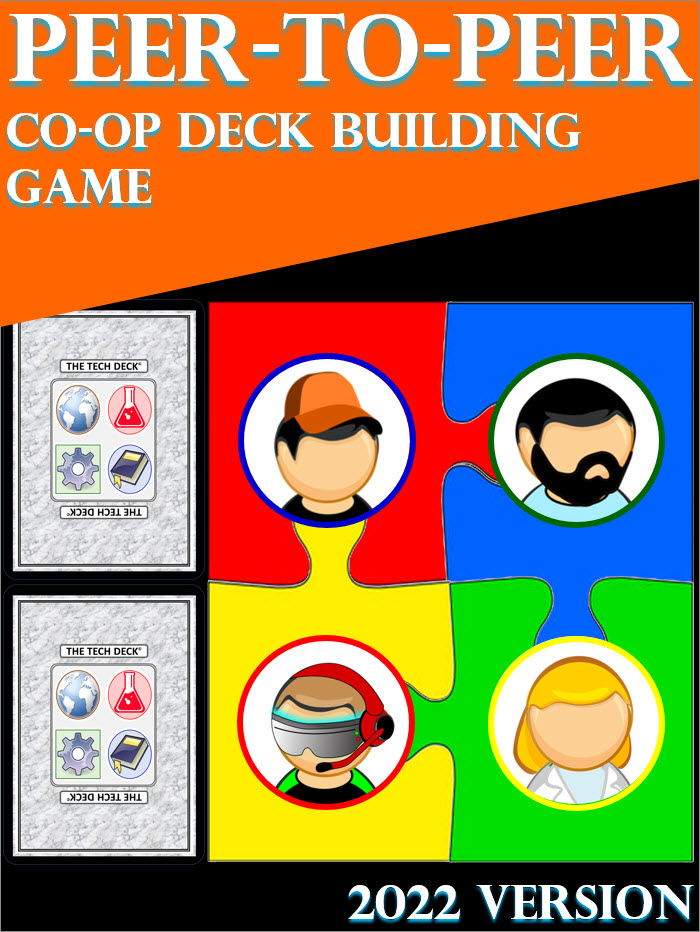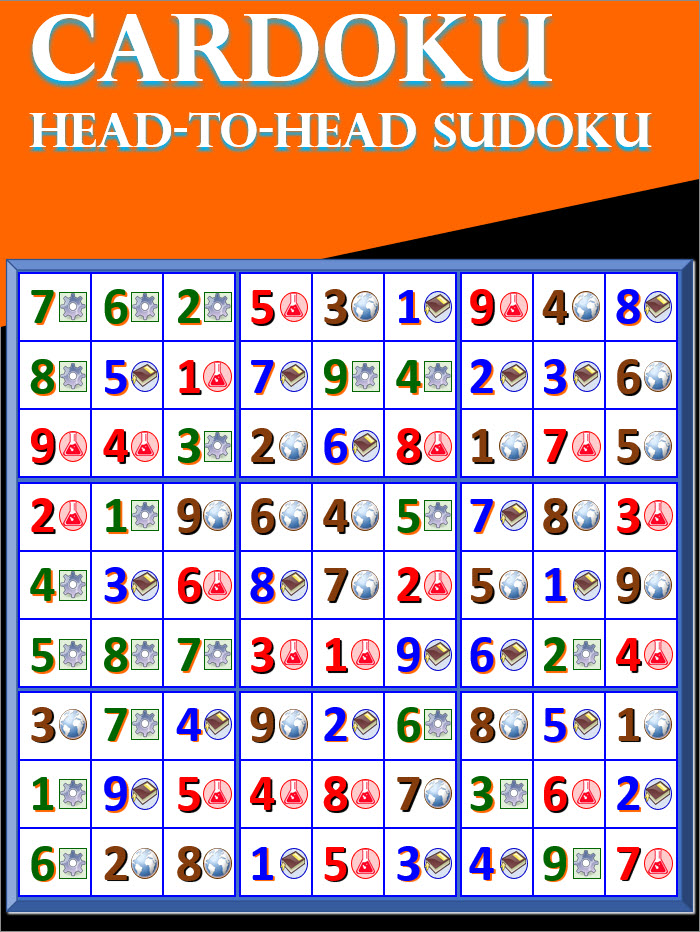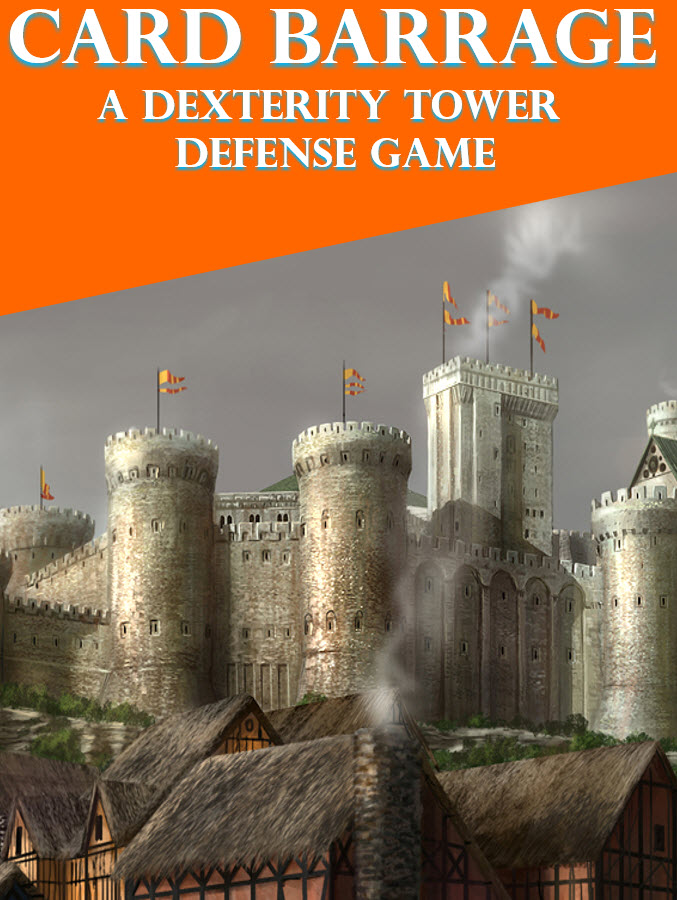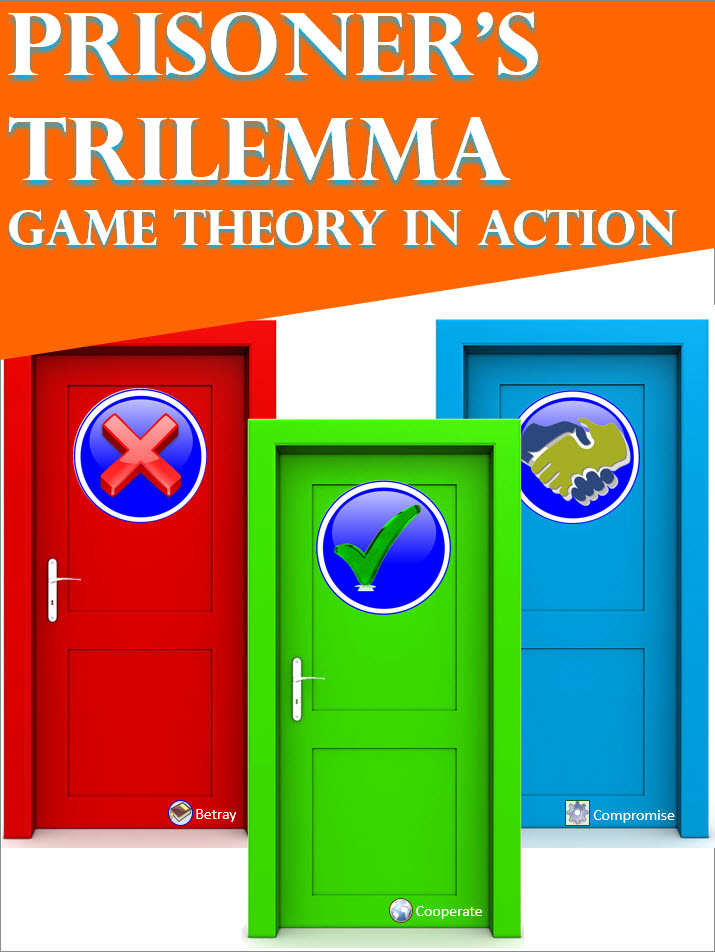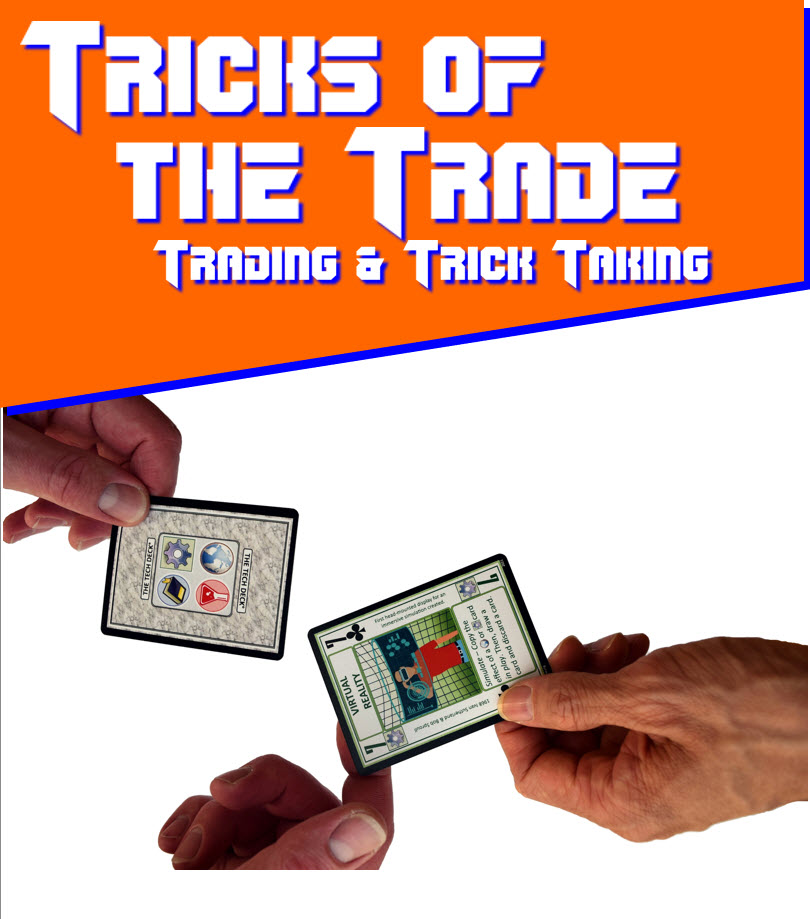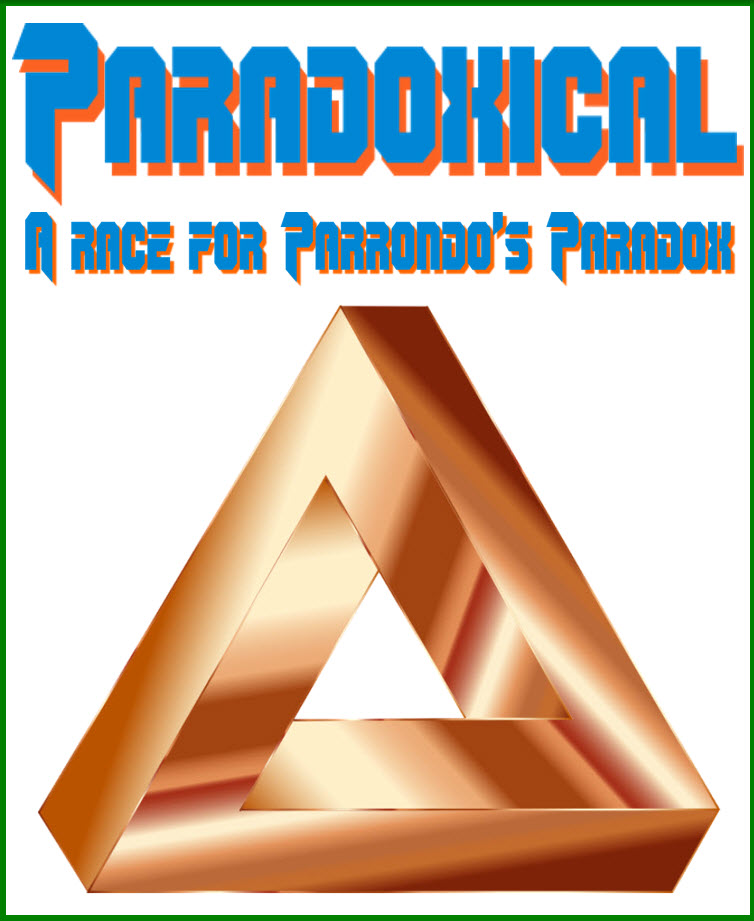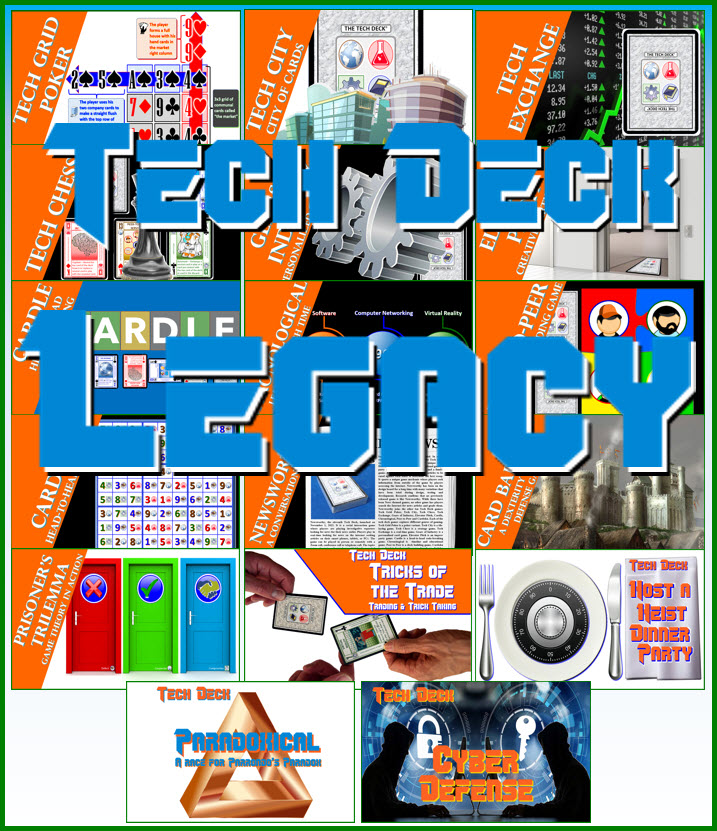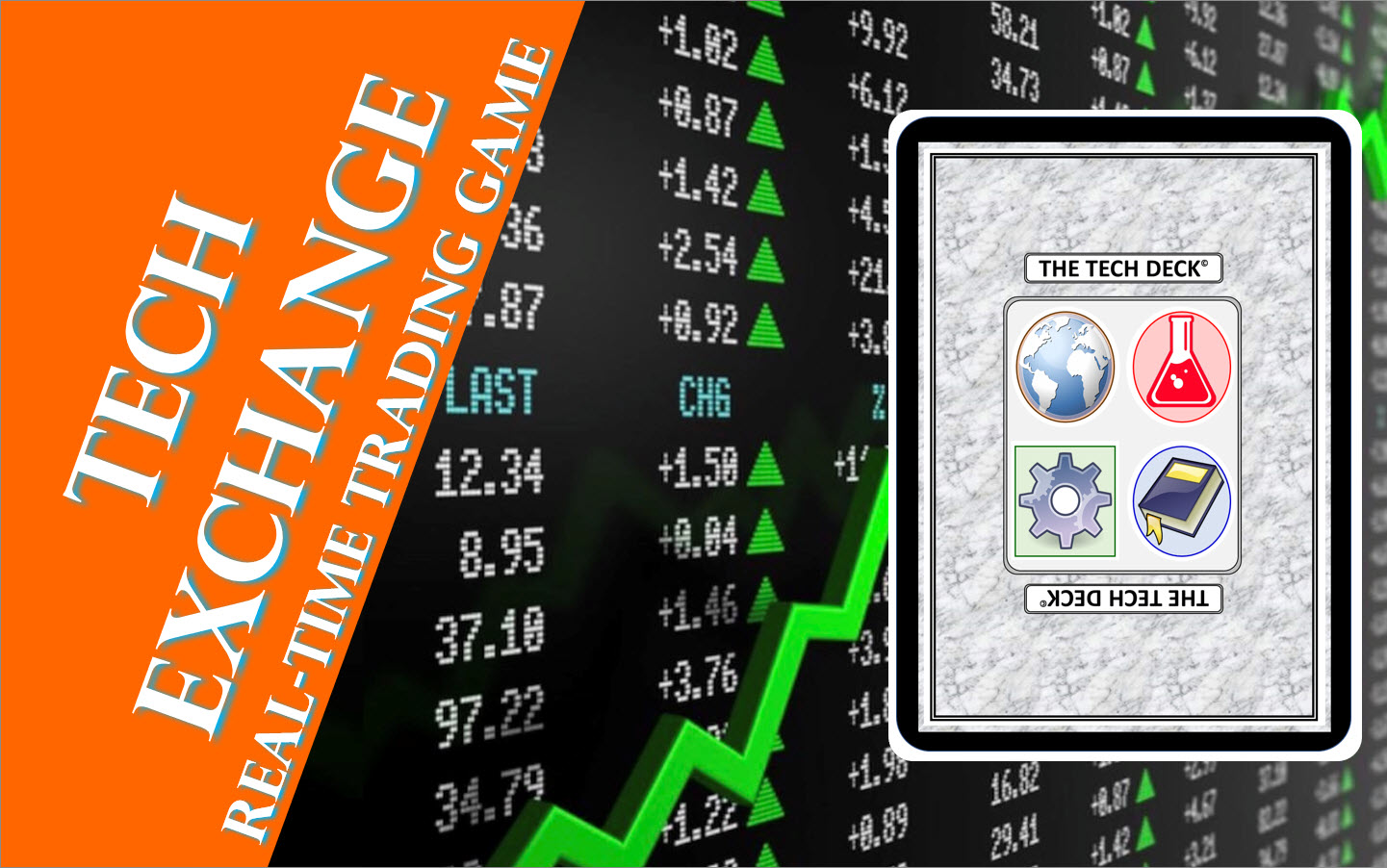
GAMEPLAY OVERVIEW
In 1409, at the market square with the Van der Beurze Inn, traders gathered in the "Brugse Beurse" to exchange commodities. In the 13th and 14th century bankers traded in government securities. In 1602, the Dutch East India Company was the first joint-stock company to get a fixed capital stock. As a result, continuous trade in company stocks first occurred on the Amsterdam Exchange. Eventually, trade in derivatives including options and repos sprung up on the Amsterdam Market. Today, stock markets in nearly every developed and developing economy trade shares and commodities between nations. Stock markets allow companies to raise capital. Exchanges act as a clearinghouse for transactions because they collect and deliver shares and guarantee payment to the seller of sold securities.
Tech Exchange is a real-time trading game where Tech Deck cards represent stocks in a company.
All players simultaneously trade cards amongst themselves in real-time and as they do so, they grow the stock market. As the stock market grows the value of the cards in their hands increase.
GAME SETUP
STEP 1: SETUP STOCK MARKET - Take out the four 1-value cards (data mining, material sciences, internet of things, e-commerce) from the Tech Deck and put them into play. Each card starts its own stock stack each representing a different domain (knowledge, science, technology, and services). Together, these represent the stock market.
STEP 2: DEAL CARDS TO PLAYERS - Shuffle the Tech Deck and deal 8 cards to each player. If playing a 2-player game, deal 10 cards to each player instead. If playing with 5-6 players, two Tech Decks need to be used.
STEP 3: DECK & DISCARD - The other cards form a deck placed next to the stock market. Tilt the bottom 5 cards of the deck as these will indicate when trading must stop. The discard pile will be next to it.
STEP 4: FIRST PLAYER - Randomly determine a first player and give them a token to denote they are the first player.

GAME PLAY
Each round is composed of the following phases:
FIRST TRADING PHASE - The players exchange cards between each other in real-time. Players pause trading when any stock stack hits a value of three, or if no one wishes to trade anymore, or if no more trades are being accepted by anyone.
FIRST USE CARDS EFFECTS PHASE - Starting with the first player, all the players may use a game effect from one of their cards. The first two players to use effects puts a card into the stock stacks from the deck. Then discard the card used and redraw.
SECOND TRADING PHASE - The players continue exchanging cards until trading ends.
SECOND USE CARD EFFECTS PHASE - Starting with the first player, each player may use a game effect from one of the cards in their hand and then redraws that card. The first two players to use effects puts a card into the stock stacks.
REVEAL & SCORE PHASE - Determine the player with the lowest number of cards in their hand. All players discard down to that number then reveals their hands. Players score their hands.
RESET PHASE - Take the 1-value cards to form four new stock decks like at the start of the game. Shuffle all other cards and deal 8 cards to each player. Deal 10 cards in a 2-player game. Place the new deck by the side of the stock market.
GAME END CHECK PHASE - The game ends after three rounds, else pass the first player marker left to the next player.
TRADING PHASE
TRADING RULES - Two players trade one or two cards between each other. They offer one or two cards to receive one or two cards in return. All players trade simultaneously in real-time. For example, a player may say: "I will offer my 7-science and 4-knowledge for your 2-information and 11-service." After each successful trade, reveal the top card of the deck and place it in the stock stack of the corresponding domain. Any kind of verbal negotiation is allowed so long as offers and executions follow the other trade rules. Players may willingly offer any information truthfully about their hands if they wish.
EXECUTING AN TRADE - If another player accepts the offer, satisfies the conditions, and places their cards on the table, the trade is committed, must be executed and cannot be canceled. Anytime before the trade has been committed, a player may cancel the trade and pull back their cards into their hand.
SIMULTANEOUS EXECUTIONS - If more than one player wishes to accept another player’s offer, whoever can get their trade cards on the table first will execute the exchange. If two players simultaneously commit their trade cards, the player making the offer can choose which player to complete the exchange with.
END OF TRADING - Trading ends when:
(a) no one wants to make any more trades,
(b) when no offered trades are being accepted by anyone or,
(c) If there are only 5 cards left in the combined draw deck discard or 1 card left in a 4 player game.
ANNOUNCING END OF TRADING
During trading, any player may announce that they are done trading However,
they may come back and continue trading later as long as trading has not finally completed The changing stock
market may create situations where a player wishes continue trading again.
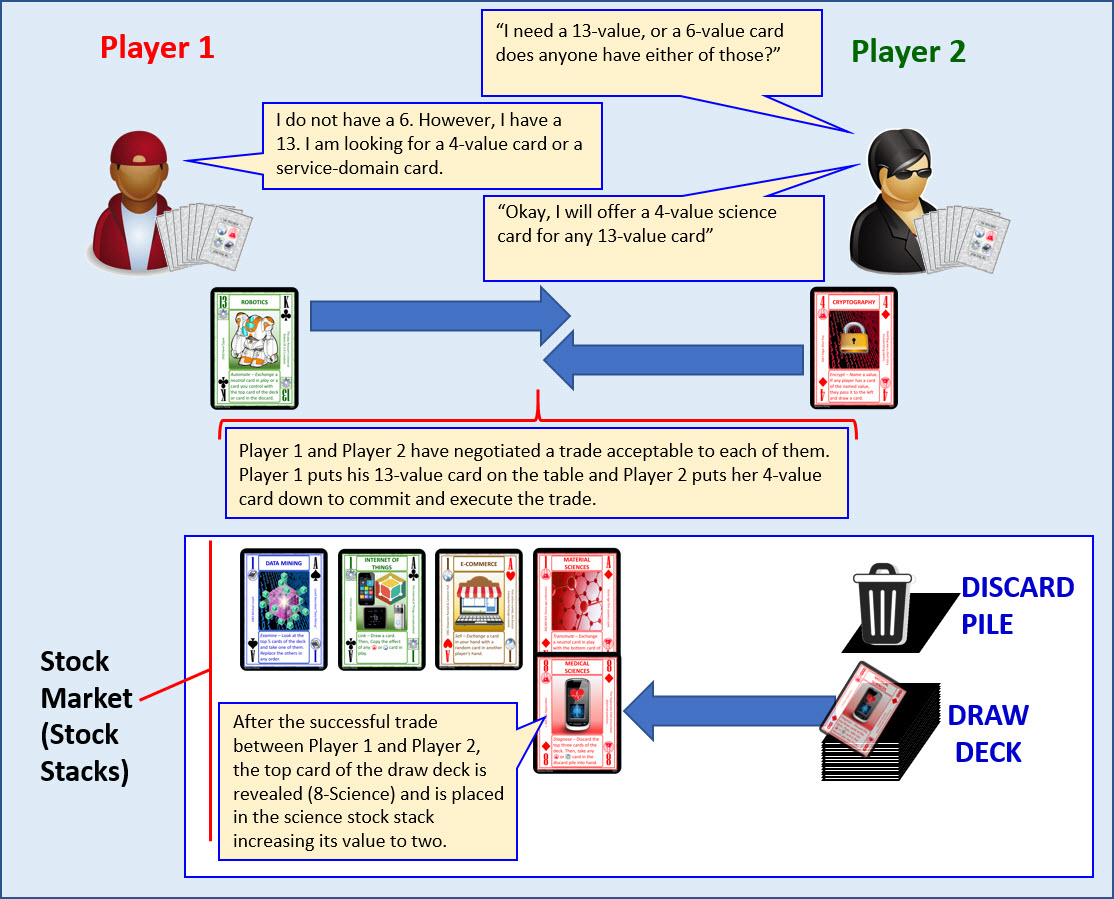
USE CARD EFFECTS PHASE
USE CARD EFFECTS - Starting with the player who has the first player marker, each player may choose to use a game effect from one of the cards in their hand. The player reveals the card and resolves the game effect on it. After resolving the effect, for the first two players to use game effects, reveal the top card of the deck and put it face up on the stock stack of the matching domain. Then, discard the card that was used and redraw a new card from the deck.
DECK RUNNING OUT OF CARDS - If the deck runs out of cards, or a player needs to reveal more cards than are in the deck, resolve as much as possible. Then, shuffle the discard into the deck and perform the rest of the effect. For example, to reveal 4 cards in a deck with only 2 cards, reveal the 2 cards. Shuffle the discard to create a new deck. Then, reveal an additional 2 cards. If there are still not enough cards in the deck to reveal the requested number of cards reveal as many as possible.
CORNER CASES - If a game effect has multiple effects, but any of them are unresolvable, do as much as possible. Stock market cards are all in play and neutral. Game effects last until the end of the round if not specified on the card. It is possible that a game card effect will be used again because of a copy effect from a hand card. Whenever an effect causes “all players” to do something, the active player starts first. Then, the effect passes to the next player on their left.
REPLACE & EXCHANGE GAME EFFECTS - Some game effects replace or exchange neutral cards. If such an effect results in a card not matching its stock stack domain, then move it to the appropriate domain. For example, the 13-Science (AI) card effect replaces a neutral card in play with the top card of the deck. A player replaces a card in the technology stock stack from the top of the deck. If that was a science card, move it to the science stock stack.
WILD CARDS - When a wild card is drawn, reveal it and place it into the stock stack of the drawing player’s choice. Then, draw a card from the deck. If a wild is taken into hand, replace it into a stock stack. Wild cards are not expelled.
REVEAL AND SCORE PHASE
REVEAL AND SCORE - Determine the player with the lowest number of cards in their hand. All players discard down to that number then reveal their hands. Players arrange their hands into groupings of triples (three of a kind), quadruples (four of a kind), and up to one flush (cards sharing the same domain) of 3 or 4 cards. For each group, pick a domain from among cards in the group. Multiply: (number of cards in the stock stack of the selected domain) x (the number of cards in the group) = (score that many points). Repeat for each grouping. For example, for a 9-value triple (9-knowledge, 9-science, 9-technology). A player picks the knowledge domain stock stack which has 4 cards in it. He scores 4(multiplier) x 3(triple) = 12 points for that grouping. That player repeats for the other groups in their hand.

RESET AND GAME END CHECK
RESET - Take the 1-value cards to form four new stock decks like at the start of the game. Shuffle all other cards and deal 8 cards to each player. If playing a 2-player game, deal 10 cards to each player instead. Place the new deck by the side of the stock market.
PASS FIRST PLAYER MARKER - The first player marker is passed to the next player to the left (clockwise).
END OF GAME - The game ends after 3 rounds. The player(s) with the most points wins the game. If two or more players are tied they share the victory.
DOWNLOAD THE RULES
Tech Exchange Full Rules:
Tech Exchange Rules
Tech Exchange Rules Insert:
Tech Exchange One Page Summary
INTRODUCTION VIDEO
Watch a video on the introduction of Tech Exchange:
PLAY GUIDE VIDEO
Watch a play guide video for Tech Exchange:
ENTRY ON BOARD GAME GEEK
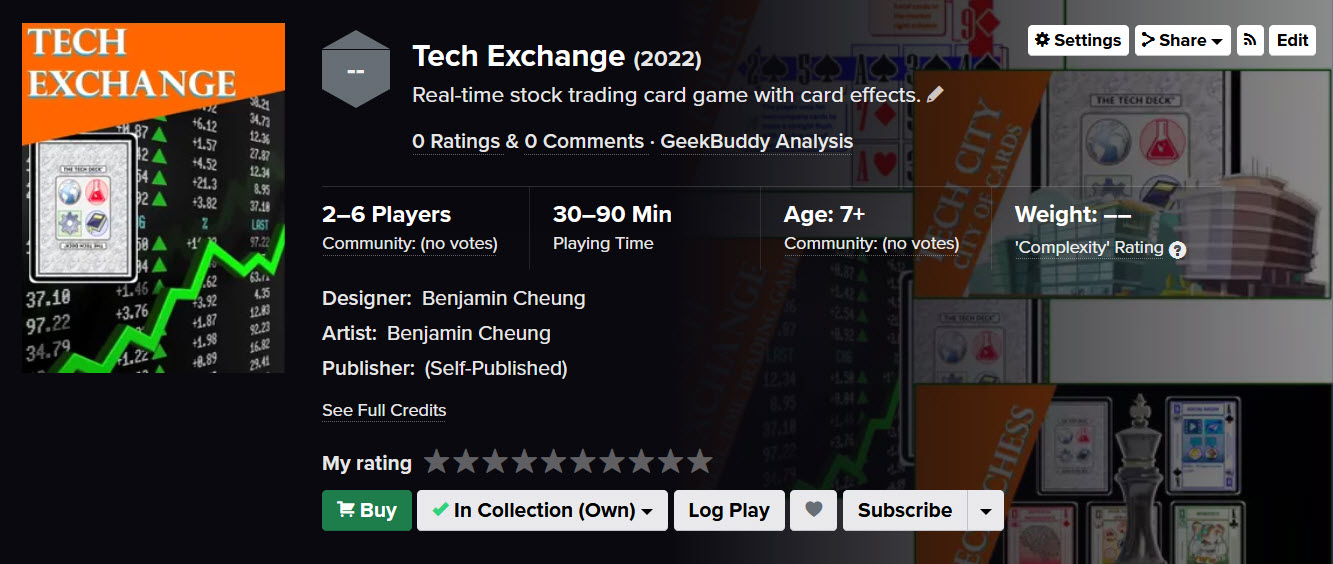
You can read and explore the
BoardGameGeek entry for Tech Exchange.
PUBLICATION INFORMATION
·
Published: January 24, 2022
·
Format: Card Game
·
Elements: 54 Cards
·
Size: 3.75" x 2.8751" x .875"
ORDERING TECH EXCHANGE
·
To purchase the Tech Deck:
Contact Me
EXPLORE OTHER GAMES
